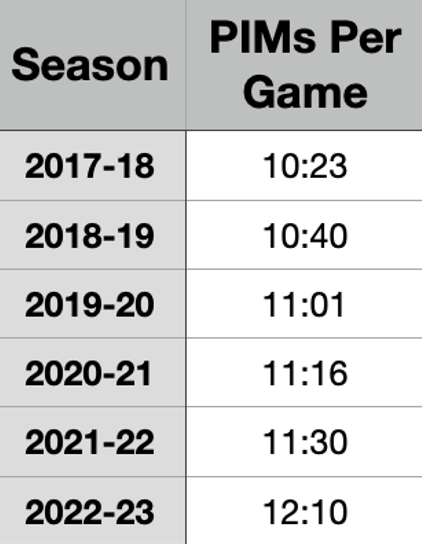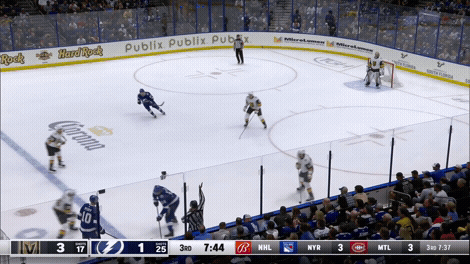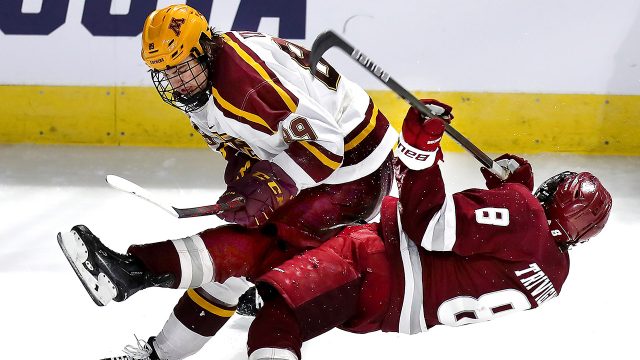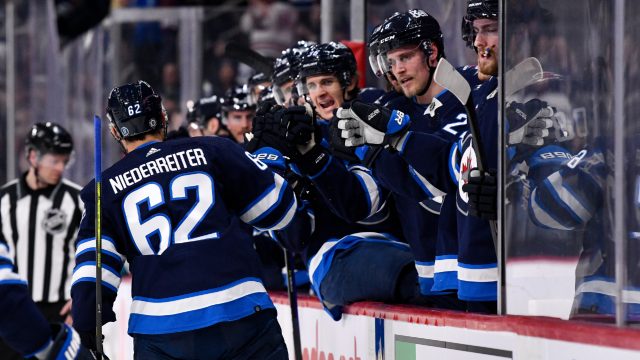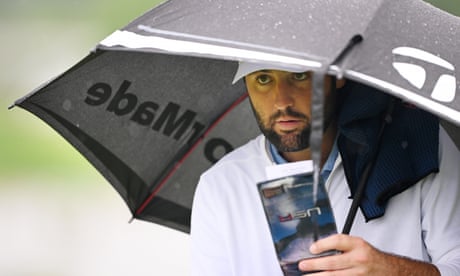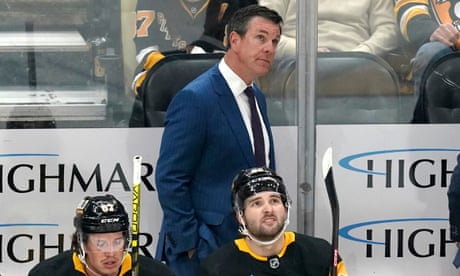
When you think about the Steven Stamkos-era Tampa Bay Lightning, it’s easy to call up memories of their elite skill. I see Nikita Kucherov and Stamkos bombing pucks off the flanks, Victor Hedman connecting on multi-zone stretch passes, and Brayden Point slicing through defenders who give him too much space. Over the years they’ve shown they can skate, they can dish it, and they can score.
With that though, it’s also easy to recall the unique way they’ve combined grit with that skill. We all know they play teams hard, they’re OK with physical play, and they thrive in those most competitive environments.
But I’m not sure people are truly aware of just how much that physical element has been a part of Tampa Bay’s make-up, and greater than that, how much it has become the core of their identity today.
The question I’m going to get into today is, if you’re the Toronto Maple Leafs, how much do you want to acknowledge the Lightning’s players who try to drag you into scrums with face-washes and jawing and other forms of emotional warfare, when there’s an actual hockey game to be won? I think it’s well-established that no team wants to be a Sedin getting rabbit punched by Brad Marchand, they don’t want to be Auston Matthews not acknowledging the choke-out attempt from Ben Chiarot, they can’t just “turn the other cheek” for seven games when both cheeks are getting punched in. But you also can’t get lost in the sauce when there’s actual hockey to be played.
Fun facts on the Lightning’s “edge”:
This season they “lead” the NHL in PIMs, they’re second in fighting majors, and they’re first in misconducts. They live in the box, totalling an average of 12:10(!) in PIMs per game, which is up from last year when they finished second in PIMs per game with 11:30. That year they finished two seconds behind the Preds 11:32 per game, which was built on the back of Tanner Jeannot’s league-leading 14 fighting majors (among forwards), so … Tampa promptly traded for him.
A stunning fact: this is the 11th straight season the Lightning have either finished first or second in the NHL in PIMs per game (it’s here I’ll note the presumably-pure-coincidence that this is Jon Cooper’s 11th season with the team). I say “first or second,” but they’ve only been second twice and have lead the league nine times. The 2011-12 season was the last time they were outside the top-two, but what’s even crazier is you have to go back to 2005-06 to find a season where they weren’t top-5 in the NHL in PIMs per game.
Even with this history of playing an, er, abrasive game, it’s increasingly become a larger part of their identity. Check out the Lightning’s past six seasons, and the direction they’ve gone:
We saw them dogpile a player for touching their goalie:
We saw them dogpile Tony DeAngelo for spearing Corey Perry:
And on Thursday we saw them have a near 5-on-5 line brawl against Vegas.
(Tampa would score two goals with the goalie pulled doing their skill thing just seven minutes later.)
Whether their uptick in physical confrontation is by design or frustration, it’s a reality. I only suggest “frustration” because the truth is, the Lightning might be more flawed than they’ve been in some time as an actual hockey club. For five straight years, they’ve been inside the league’s top-10 in both goals for and goals against, often handily (like the years they outright lead the league in scoring).
This year the Lightning are sixth in goals for, which is good, but 15th in goals against. It may feel less likely — at least to them — that if they just play straight up hockey they’ll be on their way to another Stanley Cup Final as currently constructed, with a bit more porous back-end. For some context as we head into the playoffs, the Leafs currently sit sixth in goals against per game, and ninth in goals for per game.
What might be more relevant statistically is that the Leafs are not a PIM-heavy team (they’re 23rd in the NHL with 8:18 PIMs per game), and they have success at 5-on-5 where they’re fifth in the league by expected goals (while the Lightning are ninth).
Neither team would have a special teams advantage heading into a post-season series today. They are second and third in power play percentage (with Tampa ahead), and 13th and 14th in PK percentage (with Toronto ahead).
With all that, it seems it would behoove the Lightning to make this a knock-down, drag-out first round series, forcing the Leafs off their preferred style of game, while pushing the play to more special teams where they’re about even, rather than letting the Leafs’ deep forward group keep plugging away at Tampa’s questionable defence corps at 5-on-5. The Lightning will want to make life hell for the Leafs’ skilled players, and they’re very comfortable playing inside that environment.
So just how much should the Leafs entertain what we can safely assume will be the Lightning’s preferred style of play?
When I played in the BCHL (where we went to the finals twice, winning the championship in our second try), our coach would hold team meetings in the evenings leading up to a playoff series, with the highlight being a discussion of the opposition. Our coaches would write out the opposing lineup, a few players would be circled and a few would be put in boxes, with the rest left untouched. The idea was that we were to be hockey robots – never let ‘em see you sweat … with the exception of the highlighted players. We would take some special care with them.
The guys in circles were who we believed we could make uncomfortable. We’d get in their ears and remind them we were finishing every check, we were coming for them, and that each shift was going to be a living nightmare whether it cost us penalties or not. For the guys in boxes, we were to treat them like they didn’t exist. They were the guys like Pat Maroon and Corey Perry, and our goal was to make them irrelevant by not acknowledging them.
That’s why at the time, I didn’t hate that Auston Matthews didn’t get into it with Ben Chiarot a couple years back. Why should Matthews play Chiarot’s game? But of course, ignoring abuse like that only works if you’re doing the same to their elite players, grabbing them, going at them, and making their life hell. You can’t be the only side taking punches without pushing back. Otherwise it comes off as being passive and reactionary, retaliating rather than instigating. You want to take the game to your opposition and make them react, retaliate, and live a step behind.
Last year, the Leafs saw this coming in round one versus Tampa, and they prepared for it. They dressed Wayne Simmonds and Kyle Clifford and maybe got a little overhyped for the physical action. Sheldon Keefe talked about his team preparing for a “violent” series in the lead-up to Game 1. Then of course, Clifford – presumably all amped up on Red Bull and a clearly defined role – threw a bad hit almost immediately, took a penalty, and the Leafs were on their heels from the get-go. Now, they went on to win that game handily, so it’s tough to say being in that mindset harmed them, but it was certainly a big part of how they prepared to play that series.
This is going to be a key battleground in the Toronto/Tampa Bay series this year, which looms just a month away. Will Toronto dress Luke Schenn among their six D in anticipation of needing some pushback to kick things off? Will Noel Acciari and Sam Lafferty be more relevant in the early going than later in the series? Or will the Leafs stick to their identity, focus on playing their 5-on-5 game, and hope to make the Lightning pay for their PIM-heavy ways on the power play, an area that’s fallen off for Toronto badly in post-seasons past?
The right answer probably lies somewhere between accepting a full-out brawl, and pretending they’re not being directly challenged. But it’s a question the Leafs have to consider.
The challenge is coming, and like it or not, it’s going to hurt at times. But it wouldn’t hurt half as much as the pain of another first round defeat.


